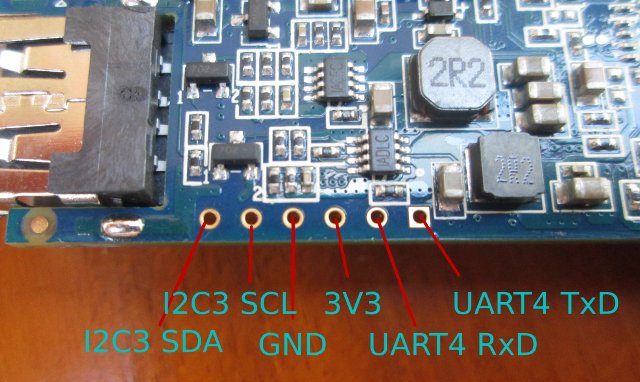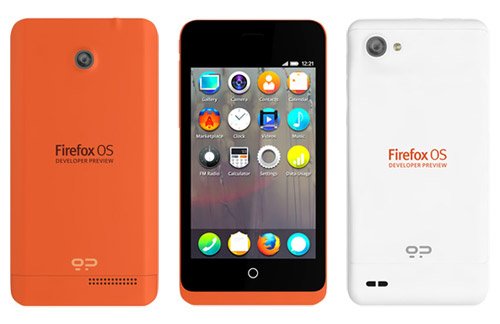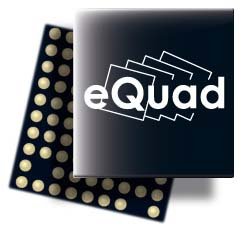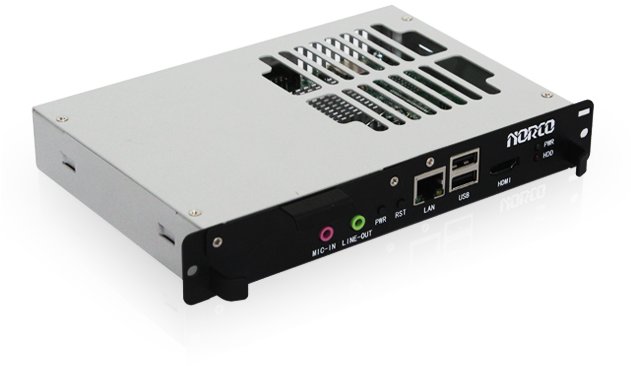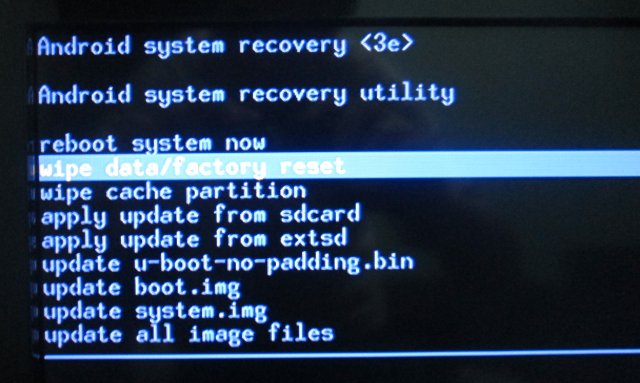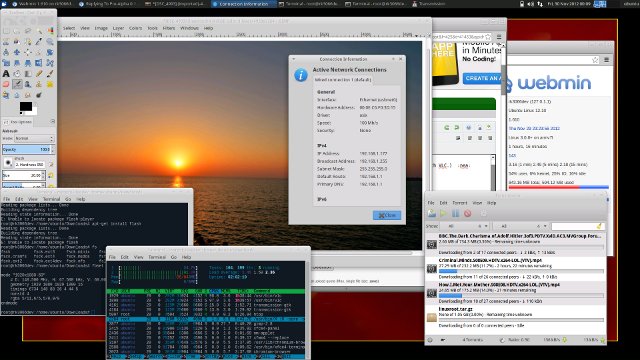One of the advantage of HiAPad Hi802 (aka Zealz GK802) is that it provides access to UART and I2C pins via through holes on the board. UART4 Tx and Rx pins give you access to the serial console which is a must for bootloader (U-boot), and kernel development or for debugging. The first thing is the open the casing and locate the debug pins on the board. The very best way is probably to solder a pin header, but since I don’t have header, nor soldering iron, I’ve done it the “MacGyver” way with 3 wires connected to TxD, RxD and GND, and some sticky tape. You can now insert the other side of the wires into your USB to TLL debug board (GND <-> GND, Tx <-> Rx, and Rx <-> Tx), and connect it to your Windows or Linux PC. The serial board should be recognized as a […]
Mozilla Unveils Firefox OS Developer Preview Phones
Mozilla has just announced an entry level developer phone for Firefox OS based on a Qualcomm Snapdragon S1 processor, 512 MB RAM, and 4GB Flash. You may think the specs are quite poor, but this actually makes sense since Firefox OS is initially destined at emerging markets. Here are the full specifications of this smartphone (Codenamed Keon): CPU – Qualcomm Snapdragon S1 1Ghz System Memory – 512 MB RAM Storage – 4GB Flash + microSD slot Display – 3.5″ HVGA Multitouch Network – UMTS 2100/1900/900 (3G HSPA), GSM 850/900/1800/1900 (2G EDGE) Camera – 3 MP rear camera Misc – Wifi N, Light and proxmity Sensor, G-Sensor, GPS, MicroUSB Battery – 1580 mAh The phone supports over the air updates, and comes unlocked, so you can simply add your own SIM card. These developer phones are being developed by Geeksphone in partnership with Telefonica. If you don’t have the developer phone […]
ST Ericsson Demonstrates NovaThor L8580 Multi Cortex A9 SoC @ 2.8 GHz
We’ve first heard about ST Ericsson NovaThor L8580 in July 2012, and the company demonstrated their new processor at CES 2013. This SoC features 4 (or is it 2?) Cortex A9 cores, and a PowerVR SGX544 GPU, but the real advantage of this processor is the new process technology called FD-SOI (Fully Depleted Silicon On Insulator) which, combined with some other power and performance optimization techniques, allows some fun stuffs such as: 2.8 GHz dual core operation 1 GHz operation at 0.63V instead of 1.1V when using bulk CMOS technology. You can see those 2 use cases in the video demo. In the first demo, a phone prototype based on L8580 @ 2.8Ghz is clearly faster than the Samsung Galaxy S3 based on Exynos 4412, and the second demo shows power measurement of the prototype when ran at 1GHz. Other key features of L8580: Low-power eQuad processor clocked at up […]
LTSI 3.4 is Now Available for Download
Nearly 2 years ago, the Linux Foundation’s Consumer Electronics (CE) working group created the Long Term Support Initiative (LTSI) Linux kernel for consumer electronics devices in order to have a common stable platform released every 2 years, and share the kernel development work among competing companies including Hitachi, LG Electronics, NEC, Panasonic, Qualcomm Atheros, Renesas Electronics Corporation, Samsung Electronics, Sony and Toshiba. Last week, the CE working group has released LTSI 3.4 kernel, based on Linux 3.4.25 kernel release and including several backported features from newer kernels including: The Contiguous Memory Allocator (CMA), which is extremely useful for embedded devices that have very limited hardware resources and will better handle the large memory requirements of multimedia applications. CMA originally was merged into the 3.4.0 kernel release, but its functionality was quite limited. Since then, the feature has been significantly improved in the kernel.org releases and those fixes have been added to […]
Norco BIS-6332A Freescale i.MX6 OPS Compliant Digital Signage Platform
Norco recently unveiled a BIS-6332A, a platform based on Freescale i.MX6 processor compliant with Intel’s Open Pluggable Specification (OPS) mainly to be used as a digital signage player, but also as a fanless Box PC, a media player, a point of sale and more. The open pluggable specification (OPS) defines mechanical and electrical characteristics so that you can easily replace a OPS compliant board or device with another compliant platform. Here are the specifications of the device: SoC – Freescale Cortex-A9 i.MX 6 series (Single-core/dual-core/ Quad Core CPUs) System Memory – Onboard 1GB/2GB DDR3 800MHz RAM Storage: 1xMicro SD 4GB/8GB iNAND flash 1x SATAII for 2.5″ HDD or SSD Video Output – 1x HDMI (front panel), 1x HDMI ( extended by OPS slot) and LVDS Connectivity: 10/100/1000Mbps LAN (Atheros AR8033) On-board USB WIFI 3G (optional) USB – 2x USB on front panel, 3x USB provided via OPS slot, one 2x5Pin USB […]
GeekBuying Releases Firmware 1.65.4 for GK802 mini PC
Geekbuying has released a new version of the firmware (1.65.4) for Zealz GK802 mini PC that fixes NTFS and Bluetooth issues, but you may instead want to use deadhp1 version which also provides root access, and fixes “this item is not compatible with your device” issue in Google Play. There are 2 files available (Deaphp1): rooted_fixed_rt-M500a_v1.65.4_20130118a_updated.7z (link down) – Firmware Update 1.65.4 (127 MB) rooted_fixed_rt-M500a_v1.65.4_20130118a_updated_FULL_IMAGE.rar (link down) – The full SD card with 1.65.4 (747 MB) Normally, you would just use the firmware update file that contains the system, boot, u-boot and recovery partition (in this release) by following those steps in a Linux or Windows PC [Update: this method does not appear to work for anybody, please scroll down to use dd / Win32DiskImager method]: Extract rooted_fixed_rt-M500a_v1.65.4_20130118a_updated.7z Copy the files to a microSD card Insert the microSD card into GK802 microSD slot. Insert the microUSB cable halfway in GK802 […]
PicUntu – Rockchip RK3066 Linux Distribution for mini PCs (UG802, MK808, …)
Many people are using RK3066 mini PCs because they currently offer the best performance to cost ratio, but until now they were mainly limited to Android Jelly Bean, although there was some preliminary port of Ubuntu available for the devices. Now, this preliminary port has become a specific Linux distribution for Rockchip RK3066 PCs-on-a-stick called PicUntu, which is based on Ubuntu 12.10, and can optionally support Xfce or Gnome desktop environments. This distribution is known to work on UG802 and MK808, but should also work on some other RK3066 mini PCs such as iMito MX1. The latest version is Picuntu 0.9 RC 2.2, and features such as WiFi, Ethernet, HDMI audio, USB webcam are known to work, What you won’t get, however, is hardware video decoding and GPU support since Rockchip does not provide the relevant binary files for Linux, but this does not seem to stop the developers from […]
GPUs Comparison: ARM Mali vs Vivante GCxxx vs PowerVR SGX vs Nvidia Geforce ULP
I’m always very confused when it comes to comparing GPUs in different SoCs, and I could not really find comparisons on the web, so I’m going to give it a try even though, as you’re going to find out, it’s actually quite a challenge. There are mainly 4 companies that provide GPUs: ARM, Imagination Technologies, Vivante and Nvidia. [Update: Two comments mentioned Qualcomm Adreno and Broadcom VideoCore are missing from the list. Maybe I’ll do an update later]. Each company offers many different versions and flavors of their GPU as summarized below. ARM Imagination Technologies Vivante Nvidia Mali-400 Series: Mali-400 MP Mali-450 MP Mali-600 Series Mali-T604 Mali-T624 Mali-T628 Mali-T658 Mali-T678 PowerVR SGX Series 5: SGX520 SGX530 SGX531 SGX535 SGX540 SGX545 PowerVR SGX Series 5XT: SGX543MP1-16 SGX544MP1-16 SGX554MP1-16 PowerVR SGX Series 6: G6200 G6230 G6400 G6430 G6600 2D graphics: GC300 GC350 3D graphics: GC400 GC800 GC1000 GC2000 GC4000 ULP GeForce (Tegra […]


